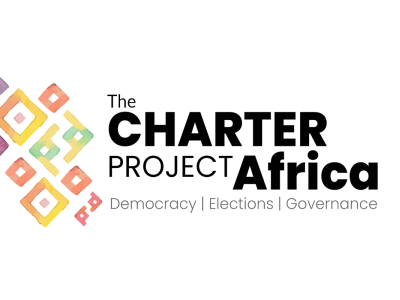
What can bridge the divide between humanitarian aid and development?
What's on this page
To meet the challenges that natural disasters, armed conflicts and structural forms of fragility bring to countries or entire regions, more flexibility and participation in implementing the EU policy on Linking Relief Rehabilitation and Development (LRRD) is needed. “We want to be more involved and take leadership in the LRRD process and be accompanied by our partners,” urged Mr. Amadou Alahouri, High Commissioner of Niger for the 3N Initiative (“Nigerians Nourish Nigerians”) during a public hearing on this topic at the European Parliament on 3 September 2012 in Brussels. The Parliament held this meeting at the eve of preparations to finalise the negotiations on the next EU budget for development cooperation. Mr. Alahouri’s comment was pertinent as it points at an issue that is recognised in the international discourse on LRRD but that risks to remain rhetoric because of the variety of goals and approaches underpinning humanitarian action. Some of them are founded on more interventionist perspectives, while others support development processes and have a more participatory approach. Attempts to bridge this gap are encapsulated in the nebulous term resilience, a buzzword used repeatedly during the EP hearing, that misses a common conceptual ground and understanding. Going back in history, LRRD as a conceptual EU approach, originates from the 1980s. It was tested in the 1990s, got updated in the 2000s. These efforts to improve the LRRD resulted in a range of more sophisticated EU policy concepts, addressing issues like the lack of coherence between EU institutions, or the complementary use of different aid instruments. Though, the results on the ground remain far from obtaining any satisfactory results and LRRD has never really been put into practice beyond pilot projects. Today – as the hearing suggests – NGO representatives and official still see LRRD as an appropriate concept. It is a “mean to close the gap between humanitarian and development action, preventing an interruption in the system when humanitarian assistance leaves”, as Kristalina Georgieva, Commissioner for International Cooperation, Humanitarian Aid and Crisis Response explained in her keynote speech. There is critical awareness though that current EC financing instruments are not sufficient to address different categories of crisis effectively. Lessons learnt from Chad, the Horn of Africa, Haiti and Afghanistan - as documented in a study commissioned on behalf of the EP Committee on Development ahead of this hearing - identify funding gaps that prevented an effective EU response and suggest much more flexibility as well as a more systematic approach towards implementing LRRD. The EU Commissioner for Development, Andris Piebalgs, reacted by emphasising that the EU needs to enhance the flexibility of its funding instruments and to “mainstream LRRD into the programming of humanitarian aid and development cooperation programmes in countries prone to disaster”. I would question, however, whether these approaches to LRRD-flaws are sufficient to address this divide. The EU should take wider policy thinking on dealing with fragile and conflict affected environments, as spelled out in the “New Deal for engagement in fragile states” on board. The New Deal, endorsed during the 4th High Level Forum on Aid Effectiveness in Busan last year, spells out peacebuilding and statebuilding goals in five priority areas and stresses partners to engage more from a partner-led and country-owned perspective. There are limits to this, as Phil Vernon pointed out, but such an engagement recognises the existence of endogenous processes and local capacities, the investment in local actors (rather than treating them as victims) local communities and structures – preferably through genuine country institutions and existing systems, or its remnants, in as far as they exist. Some elements of this thinking made their way into the current discourse on LRRD. For example, it acknowledges the importance to invest in local communities and supports local authorities and actors to integrate an LRRD approach into their national planning and strategies. As expressed by Mr. Piebalgs, “international action must come along with a national action on LRRD”. However, the overall course of the current discussion shows a strong focus on financing interventions from the outside and, by presenting the financing issue as key, it gives little recognition to the partner side. A thinking that approaches fragility from a complexity perspective is less prevalent in this discussion. The excessive use of the buzzword resilience doesn’t help. It is an important term, as it underpins the other side of fragility, the existence of positive endogenous energies, relevant foundations and constructive systems of an environment that is in crisis. It is important because it provides for openings in the discourse on LRRD to balance interventionist perspectives with a more partner-led approach. It recognises the partners as actors in their own right, which need to be involved in actions combatting the crisis from the beginning, with whom responsibilities are shared, and which are considered as the carriers of solutions to escape from crisis. While this is mostly not easy to realise in a situation of crisis or fragility, one should switch the “default-perspective” in approaching LRRD towards a new type of thinking that avoids a bias of excluding the partner-side of the LRRD equation and that puts energy into a better understanding of the dynamics and coping mechanisms of local communities. The thinking on resilience, though, is still in its infancy and needs to be further developed. The current overuse of this term unfortunately does not help and rather frustrates a constructive policy discourse, as several comments made during the panel discussion illustrated. Mr. Piebalgs announced the publication of a Communication on Resilience that will occur within a short period of time. Hopefully this forthcoming EC policy document can dispel away some of the mists created in the context of the LRRD discourse and take concerns about local ownership and participation seriously on board. An updated policy on LRRD that is more ownership-oriented and that is informed by new thinking on resilience should, however, not remain rhetoric but be continuously nurtured and interrogated when transformed into implementation. Otherwise, the risk of falling in the same implementation trap that beset LRRD will simply be replicated under a new name. -- Volker Hauck is Head of ECDPM’s Conflict, Security and Resilience Programme. His thanks go to colleagues working in his team. This blog post features the author’s personal view and does not represent the view of ECDPM.


